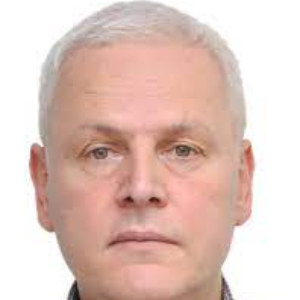Title : Electromagnetic blood flow in human body and initial factors of atherosclerosis
Abstract:
Blood flow acceleration increases from the left ventricular outflow tract, to the sinotubular junction and the ascending aorta, while it must be decreasing due to the flow turbulences in the Valsalvae sinuses. Energy of the pulse wave in the arterioles is up to 7.2 times higher, than in the ascending aorta, while it must be low due to the energy dissipation with the distance from the heart. Herewith, flow separation in large arteries is the main factor in atherosclerosis and associated with the energy loss.
Purpose of the study is identifying the additional possible energy source, for the blood flow and initial factors in atherosclerosis.
Methods and materials: 12 healthy volunteer students (male) underwent echocardiography, ECG gated MRI of the heart for the visualization intracavitary flow in the ventricles, MR Angiography of the aorta. Blood flow velocities and acceleration were studied in the different sites of the heart and the aorta.
Availability of the heart, as the possible single tool for the blood flow, looks imperfect. Due to the “contradiction” between the theory and practical data, the solution must be non-ordinary.
Oscillating motion of the blood cells with the surface charge, plasma macro-molecules, salts with the dipoles and superposing the oscillating electric field in the form of the ECG impulse providing special – electromagnetic properties of the blood flow.
Blood vessels are looks like the active electric circuits. Oscillating electric field from the cardiac dipole forms the modulated natural ultrasound vibration of the body cells/ erythrocytes, while it generates colloid vibration current and expresses as the ECG.
Blood motion in the heart chambers and arteries has the additional basis: rotating blood particles in the heart chambers and in the arterial branching sites, with the concomitant oscillating electric field triggered from the heart, forms additional electromagnetic repulsing force for the charged particles, providing to the flow. Herewith magnetic field facilitates to the repulsion of the arterial blood and attraction of the venous.
Pulse peak pressure at the arterial branching sites, is coincident with the end systolic pressure drop and the ECG-T wave. Surface waves with different frequencies and direction are formed, upgraded by the oscillating electric field . Opposite rotating particles creates repulsing magnetic force and the flow separates. Wave packets at the frequency dispersion, destroys the cell aggregates increasing the entropy of blood, whereas at the boundary layer of the vessel, it denudates endothelial sheet.
Electromagnetism affects gas exchange in the systemic and pulmonary capillaries. Modulated eclectic signal transmitting by the oscillate blood particles, besides the flow, creates additional energy source, enabling the spontaneous chemical reactions to proceed across the cell membranes.



